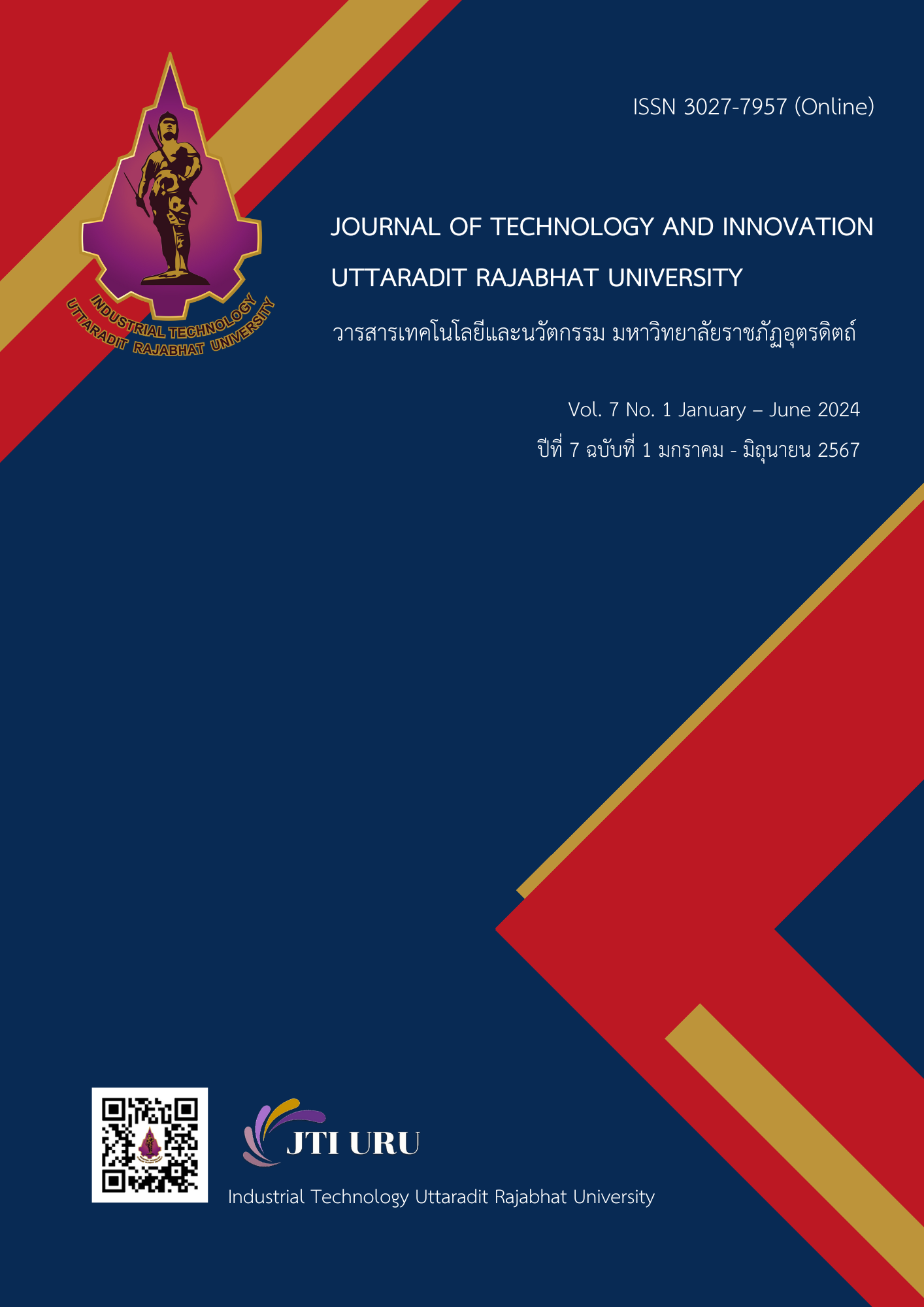EFFICIENCY OF INDUSTRIAL STEEL SURFACE UTILISING A MINI CNC MILLING MACHINE
Main Article Content
Abstract
This research aimed to find the efficiency of industrial steel forming by using a milling mini-CNC, to design a factorial experiment, and to compare the results of the efficiency of the endmill types A and B. The experiment was to compare the results of 3 factors, namely the speed of the endmill, the spindle speed set on X, Y, and Z, and the endmill feed depth. It was to use the experiment of 23 factorial designs, two-way ANOVA for statistical analysis, and find the interaction values between treatment A and treatment B by conducting two hypotheses. The findings revealed as follows: Hypotheses 1: endmill type A and type B do not have a statistical significance at .05, and F values from the table and computation were 5.59 and 3.72, respectively. It was in the accepted area of H0. Hypothesis 2: the speed of the endmill, the spindle speed set on X, Y, and Z, and the endmill feed depth got F values as 3.79 and 39,244.50, respectively which had a statistical significance at .05. It was in the rejected area of H0, but accepted H1. The results of surface roughness inspection are used software package to find the optimization. It found that the adjusted rotational speed of the endmill types A and B was optimized at 1,600 rounds/minute for milling mini–CNC SS41.
Article Details

This work is licensed under a Creative Commons Attribution-NonCommercial-NoDerivatives 4.0 International License.
References
จักรินทร์ กลั่นเงิน, และอนุเชษฐ์ พลเยี่ยม. (2558). การควบคุมคุณภาพกระบวนการผลิตเนื้อสบู่เหลวด้วยการ
ออกแบบการทดลองเชิงแฟคทอเรียล. วิศวกรรมสารเกษมบัณฑิต. 5(1): 1-12.
ปารเมศ ชุติมา. การออกแบบการทดลองทางวิศวกรรม, พิมพ์ครั้งที่ 1, สำนักพิมพ์แห่งจุฬาลงกรณ์
มหาวิทยาลัย, 2545.
สมมาตร พรหมพุฒ และนพรุจ เขียวนาค. (2565). การพัฒนาระบบควบคุมเครื่องกัดซีเอ็นซีขนาดเล็ก โดยใช้
เทคโนโลยีอินเทอร์เน็ตของสรรพสิ่ง. วารสารวิชาการเทคโนโลยีอุตสาหกรรมและวิศวกรรม มหาวิทยาลัย
ราชภัฏพิบูลสงคราม. 14(1): 1-14.
สมศักดิ์ แก่นทอง, ศิวกร อ่างทอง, อนันต์ วงศ์กระจ่าง, และสญชัย เข็มเจริญ. (2550). การวิเคราะห์การ
ออกแบบเครื่องกัดรอบสูงควบคุมด้วยระบบ CNC. (รายงานการวิจัย). ปทุมธานี: มหาวิทยาลัยเทคโนโลยี
ราชมงคลธัญบุรี.
A. Jankovic, G. Chaudhary and F. Goia. (2021). Designing the design of experiments (DOE) – An
investigation on the influence of different factorial designs on the characterization of
complex systems. Energy and Buildings. 250: 111298.
A. N. Mustapha, Y. Zhang, Z. Zhang, Y. Ding, Q. Yuan and Y. Li. (2021). Taguchi and ANOVA
analysis for the optimization of the microencapsulation of a volatile phase change
material. Journal of Materials Research and Technology. 11: 667-680.
H. K. Hwang and S. J. Kim. (2023). Investigation on the effective factor calculation of
electropolishing using full factorial design and mechanism model by microscopic analysis
for super austenitic stainless steel, Surfaces and Interfaces. 37: 102730.
P. Arunkumar, N. Muthukumaran, M. M. Samyb, L. Prabhu and R. Rajeshwari. (2021).
Investigation on the effect of process parameters in abrasive Jet Machining process using
full factorial design, International Conference on Sustainable materials, Manufacturing
and Renewable Technologies. 47(15): 5395-5400.
R.H. Myers and D.C. Montgomery. (2018). Response Surface Methodology: Process and
product optimization using designed experiments, John Wiley & Sons, New York.

